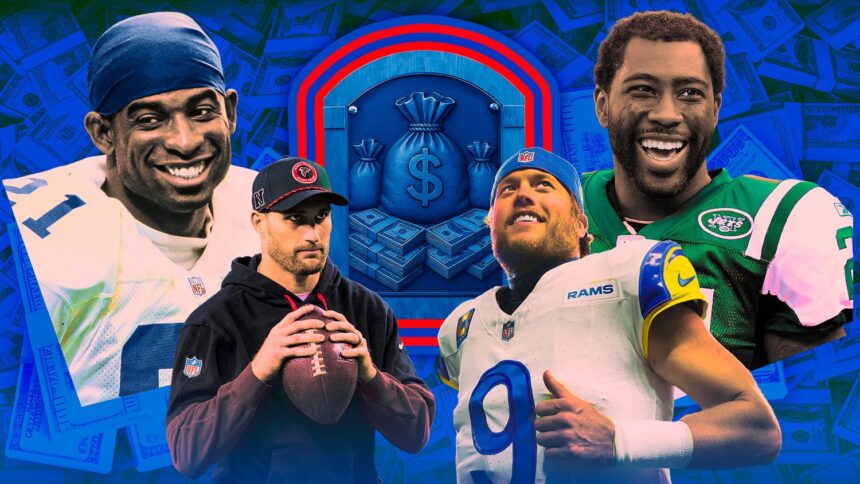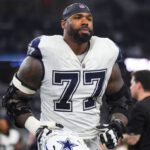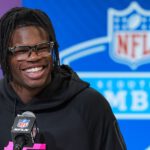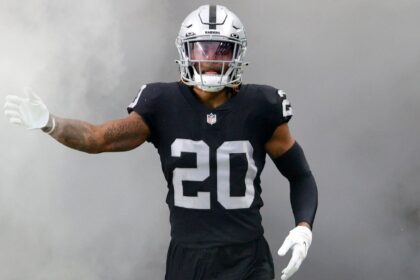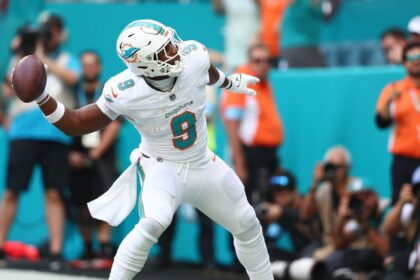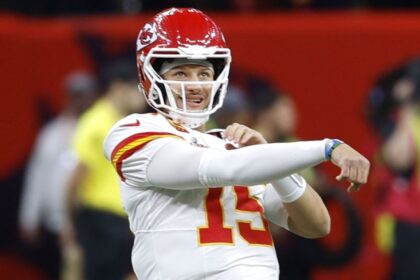Inauguration of the Stock Exchange Hall of Fame: Honoring NFL Legends
It’s time to give new recognition to some NFL legends. While many of these players do great work on the field, it’s a pleasure to finally give them the credit they deserve for their fight against some of the stingiest people on the planet: NFL team owners. It’s time to include the inaugural class of players in the Bolsa Hall of Fame (BHOF). I want to be clear: this is not an attempt to honor players who were overpaid or who didn’t deserve the money they earned during their time in the NFL. I would reject that concept in principle: almost all players, past or present, were or are underpaid in relation to the risks they take when playing professional American football. There’s no point in pointing out backup quarterbacks who were able to cash checks while rarely setting foot on the field. Instead, I want to reward players who did the best job of maximizing their influence and getting paid for their skill. Players who took holdouts to the next level. Players who bet on themselves and were generously rewarded for doing so. Players who even managed to represent themselves in negotiations and pocket millions of dollars that would otherwise have gone to an agent.For this first class, the selection committee (me) is including eight players in what will surely someday be a physical Hall of Fame. Most of the players are still active, but they have already done enough to earn their place in the BHOF without a five-year waiting period. Many of them have won Super Bowls, and a handful are in the Pro Football Hall of Fame or should end up in Canton someday. That Hall of Fame, however, will not be the only institution that honors them for their work. Here is our first class of players:
- Kirk Cousins
- Joe Flacco
- Dak Prescott
- Jalen Ramsey
- Darrelle Revis
- Deion Sanders
- Matthew Stafford
- Laremy Tunsil
Kirk Cousins, QB
Business Card: Make the main office so angry that they refuse to call him “Kirk”. If I were to explain this concept to an NFL fan and ask them who they think is worthy of being included, they would probably name Cousins first. About to become the most expensive backup quarterback in NFL history, Cousins has earned over $294 million in his career and has another $37.5 million in guaranteed money from the Falcons before the 2026 season begins. He has been underestimated as a reliable passer for most of his career, but it’s also fair to say that he has never been the best quarterback in American football. From 2016 to 2024, no one took more money from NFL teams than Cousins, whose $291.3 million earned surpassed the second-place passer (more on that player later) by $21 million. In part, that’s because Cousins didn’t emerge as early as most quarterbacks. Selected 100 spots after his Washington quarterback teammate, Robert Griffin III, in the 2012 draft, he was little more than a substitute due to injury early in his career. He threw 10 interceptions in 203 pass attempts during his first two seasons. While he improved over a prolonged period starting in early 2016, he finished his third season with a total QBR of 50.4, below the league average. With the Commanders benching Griffin in 2015 to avoid triggering his $16.2 million fifth-year option (when those options were only injury-guaranteed), Cousins’ path to the starting position cleared. In the final year of his rookie contract, he recorded a league-best 69.8% completion percentage, reduced his interception rate from 4.7% to 2%, and led the Commanders to an unexpected division title. The run ended with a home playoff loss to the Packers, but he had suddenly proven himself to be an NFL-caliber quarterback. The team owner, Daniel Snyder & Co., wasn’t so convinced. After briefly negotiating with Cousins before the 2016 season, Washington cut off talks when their offer of a multi-year contract worth $16 million per season was rejected. Instead, they used the franchise tag, paying Cousins just under $20 million. It was a reasonable decision given that he had been a solid quarterback for only one year, but it couldn’t have helped the relationship between the team and its quarterback. Cousins responded with a Pro Bowl campaign, throwing for 4,917 yards with 25 touchdowns while finishing sixth in QBR. Now, a year away from unrestricted free agency, given the exorbitant cost of a possible third franchise tag, the two sides seemed to dig in even further. Washington tried to negotiate in public, suggesting that its best offer guaranteed Cousins $53 million. By sharing that information, executive Bruce Allen repeatedly referred to his team’s starting quarterback as “Kurt,” a snub that would have been inexplicable for all other organizations except this one. Cousins signed a second franchise tag for just under $24 million. After the year, Washington negotiated a trade for Alex Smith, which marked the end of the Cousins era. It obtained a compensatory third-round pick and turned it into running back Bryce Love and guard Wes Martin, who started a combined total of 10 NFL games. Thirteen different quarterbacks started at least one game for Washington between Cousins’ departure and the arrival of Jayden Daniels last season, a period in which it had a 36-62-1 record.Quarterbacks in their 20s with an above-average playing history and no significant injury history almost never reach free agency, which gave Cousins the ability to dictate terms on the open market. With significant interest from several teams, he chose the Vikings over the Jets in what was a massive deal at the time: three years and $84 million, $82.5 million of which was fully guaranteed. Cousins also secured a no-trade clause and a no-transition tag clause, allowing him to reach free agency again unless the Vikings franchised or extended him.
The Vikings chose to extend Cousins in 2020, giving him another $31 million in guarantees for an additional season in 2021. The following year, the new regime led by Kwesi Adofo-Mensah paid him $35 million for another year, using the new deal to reduce what had become a burdensome salary cap hit for the quarterback. Only after 2023, when Cousins tore his Achilles tendon during one of the best seasons of his career, did the Vikings finally get rid of him, replacing Cousins with Sam Darnold and first-round pick J.J. McCarthy. Given another opportunity in unrestricted free agency as a viable starter, Cousins quickly signed a four-year, $180 million contract with the Falcons. Atlanta’s aggressive decision seemed strange when they used their first-round pick on Michael Penix Jr. the following month, but Cousins was well protected. His deal was essentially a one-year pact for $90 million, a two-year deal for $100 million, or a three-year contract for $135 million. With the Falcons promoting Penix to the starting position amid Cousins’ struggles last season, it seems likely they will pick the two-year option. I wouldn’t be surprised if Cousins got some guaranteed money from another team in 2026 if he returns for another season, but even if he retires, he has become the highest-compensated free agent in league history. Most of the highest-paid players in history, such as Aaron Rodgers, Matt Ryan, and Russell Wilson, earned most of their money with extensions with the teams that drafted them or signed new deals after being traded elsewhere. Cousins, currently the sixth highest-paid player in league history, will finish this deal with the Falcons having earned more than $285 million from teams that signed him as an unrestricted free agent. While the salary cap will eventually grow to the point where that figure is surpassed, the only other player in the same stratosphere in terms of earning money as a free agent (and the extensions that followed) is Drew Brees, who earned more than $256 million after signing with the Saints. The only other players who surpassed $100 million in earnings from the teams that hired them as free agents are Ryan Tannehill ($123.4 million) and Ndamukong Suh ($104 million). Will Cousins be a Hall of Famer like Brees or Rodgers one day? No. Does he belong in the Hall of the Purse? There can be no doubt.Dak Prescott, QB
Business Card: Achieve one or two victories over Jerry Jones. Like Cousins, Prescott is a former fourth-round pick who wasn’t his team’s first choice as the quarterback of the future. During the 2016 draft, the Cowboys were interested in drafting Paxton Lynch or Connor Cook, only to be outmaneuvered by the Broncos and Raiders, respectively. Team owner Jerry Jones & Co. settled for Prescott with the 135th pick, and after Tony Romo suffered a back injury in the preseason, the door opened for the rookie. While Prescott proceeded to have a 13-3 record and led the Cowboys to two division titles in his first three seasons, the front office wasn’t exactly eager to pay him when he became eligible for an extension in 2019. The Cowboys prioritized Ezekiel Elliott, who signed a six-year contract for $90 million. Prescott played the final year of his rookie contract and waited. That decision has likely cost Jones nine figures in terms of lost influence and extra money for Prescott. In 2019, the Cowboys reportedly offered him an average of $33 million per year in a new deal, although without real details about the guarantee structure. He asked for $40 million and the Cowboys refused. He played the last year of his rookie contract, and after being one of the biggest bargains in American football between 2016 and 2019, he got the franchise tag for $31.4 million in 2020. While that season was cut short by a serious ankle injury, a disappointing year meant little in terms of his negotiating influence. Instead, the ticking clock on Prescott’s path to free agency was more significant. Because the Cowboys had no choice but to offer him a second franchise tag for $37.7 million and risk losing him the following season for nothing in free agency, the time for timid negotiations was over. Prescott got everything he wanted and more. He received a four-year deal for $160 million with that average annual salary of $40 million. By never signing the tag and limiting his new deal to four years, he had the opportunity to reach free agency again after his season at 31, still firmly in the peak years for quarterbacks. And, crucially, his new deal had no tag or trade clauses, which meant he would potentially have even more leverage at the end of this contract. Effectively, after Prescott finished second in the MVP voting in 2023, the Cowboys had no choice but to give their long-term starter a record deal. Prescott’s next four-year contract was for a staggering $240 million, with records for average annual salary ($60 million), single-season cash ($86.3 million), cash over the first three years ($174.1 million), and the largest signing bonus in history ($80 million). Again, he was able to negotiate no-trade and no-tag clauses, giving him greater leverage at the end of this pact. It seems revealing that other teams haven’t even been willing to match this Prescott deal for their own quarterbacks and, at least so far, have treated it as an outlier. Josh Allen’s 2025 extension with the Bills, while consisting entirely of new money and erasing his old contract, averages $55 million per season, despite the fact that he has been a more productive and successful quarterback than his Cowboys counterpart. The 49ers’ Brock Purdy, who was similarly underpaid as a late pick, signed a deal with an average salary of $53 million. For the moment, Prescott’s deal stands alone as the richest in all of football. Between 2021 and 2024, Prescott took home a staggering $212.3 million, almost $47 million more than any other player. We can (and often do) debate whether he is that caliber of player, but it’s just a small factor in how and why he’s been paid. The Cowboys haven’t been willing to face a future without him, and after playing the franchise tag game with their quarterback at the end of his rookie contract, they’ve been operating from a position of desperation during their negotiations. After being an afterthought and the biggest bargain in the league for four years, Prescott has turned the tables on Jones and the Cowboys.Matthew Stafford, QB
Business card: The last of the great quarterbacks from the previous agreement. One of the most significant changes in the NFL in the last 25 years occurred in 2011, when the league locked out its players before finally agreeing to a new collective bargaining agreement (CBA) at the end of July. As part of the agreement, the league instituted a rookie scale for draft picks, essentially locking each player’s compensation at a below-market rate for the first four (or five) years of their career. That measure created what quickly became a new philosophy of building around quarterbacks on rookie contracts, while almost completely eliminating rookie holdouts in the process. (Never doubt the Bengals’ ability to make something old new again!) Overnight, the first overall draft picks suffered a significant salary cut. Sam Bradford, the last number 1 overall pick before the CBA changed, signed a six-year deal for $78 million with $50 million guaranteed. Cam Newton, the first pick in 2011, signed a four-year deal for just over $22 million, all of which was guaranteed at the time of signing. Even now, with the cap more than double what it was in 2011, the first overall pick Cam Ward didn’t get as much guaranteed money ($48.8 million) as Bradford did in 2010.Bradford couldn’t turn his rookie riches into a significant second contract, although he took home a respectable $130 million during his nine seasons in the NFL. But no one could have benefited more from the league’s open contracts before the rookie scale than Stafford, who will surpass the $400 million mark in career earnings after returning to the Rams for the 2025 campaign.
Selected with the first overall selection in 2009, Stafford’s rookie deal was particularly striking. When he agreed to the terms of a six-year deal for $72 million with the Lions, the $41.7 million in guarantees were the largest figure for any player in league history, surpassing the $41 million that defensive tackle Albert Haynesworth had guaranteed by Washington earlier that offseason. You can understand why NFL owners didn’t love the idea of guaranteeing an unknown and inexperienced quantity like Stafford more than the experienced and proven veteran Haynesworth. Of course, the Stafford deal turned out to be much better than the Haynesworth pact. In fact, the Lions ended up being victims of their own draft success. Detroit landed a great trio of top-five picks before great trios were a thing. In 2007, they used the second overall pick on Calvin Johnson. Two years later, after their 0-16 season, the new regime led by Martin Mayhew selected Stafford. The following year, the Lions took defensive tackle Ndamukong Suh with the number 2 pick. In the modern NFL, the Lions would have been positioned to thrive by being blessed with three superstars on rookie-value deals. According to the old CBA, they were paying three (very talented) players about $34 million per season, approximately 28% of the salary cap at the time. It would be the equivalent of paying those three players approximately $79 million today. And according to the league’s old CBA, those contracts were large enough to essentially prevent the Lions from tagging Stafford or Johnson at the end of their deals, limiting their leverage in negotiating new deals.
It’s one thing for a veteran to justify needing a certain amount of money to play at the end of his career, but Stafford, according to reports, was open to a trade to the Giants or Raiders if they were willing to pay him what the Rams wouldn’t. Forget about trying to play for a winner to get another ring: he threatened to go to one of the worst teams in the league, while degrading his offensive coordinator and offensive line, if the Rams weren’t willing to give him a raise. That’s Hall of Fame dedication to the bottom line.
In the end, the Rams and Stafford found common ground. While Stafford didn’t get a multi-year guarantee, he stayed in Los Angeles for $40 million in 2025. Would he really have gone to play for the Giants? Some people would call it a bluff. Hall of Fame members of the Stock Exchange would call it a smart negotiation.Joe Flacco, QB
Business Card: Convert a playoff run into two contracts. No player could have done a better job of turning their influence into an unexpectedly large contract than Flacco, who turned a playoff run into two contracts with the Ravens. In his case, timing was everything. Like the other quarterbacks in the Hall, Flacco bet on himself. With four consecutive playoff appearances and two trips to the AFC Championships in his first four seasons, he had done almost everything but lead the Ravens to the Super Bowl. Given that they ranked third in scoring defense in each of those four years, however, it was fair to say that many NFL fans believed he was being carried to those deep playoff runs. While Flacco had just produced a solid performance and came close to beating the Patriots in the 2011 AFC Championship, he had thrown a total of seven interceptions in the four losses that had ended Baltimore’s four seasons with him at the helm.With that in mind, perhaps it shouldn’t have been a surprise that there was a disconnect between how the Ravens viewed Flacco and how the 27-year-old player viewed himself. Entering the 2012 season, he and the Ravens were close to a contract extension before those talks fell through. ESPN’s Adam Schefter described Flacco’s attitude towards a long-term deal as “indifference,” a term rarely used regarding someone getting life-changing money. Schefter noted

